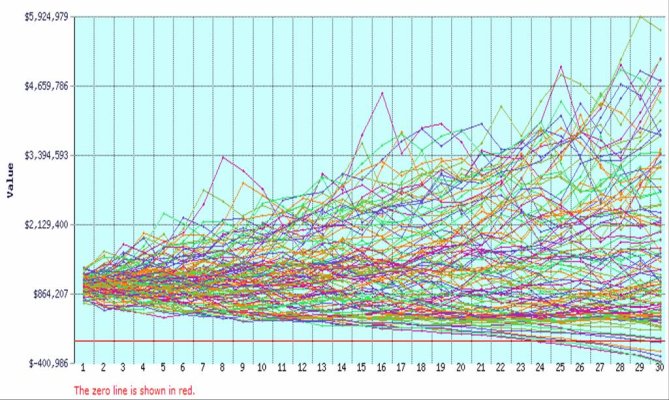Leonidas
Thinks s/he gets paid by the post
This is what I get for trying to skim a pension plan. I was wrong, there were two paragraphs in a row that talked about your options when you leave active service. The first para said you could receive your pension or defer into DROP, and the second said you could leave your accumulated pension contributions with the plan if you didn't have enough time to retire, but you had to take a distribution if you had less than 5 years of pension service. Sorry, my bad.Can you point me to where you see that I need to stay in DROP for 5 years so i can participate after retirement? As far as I know, I dont have to be in DROP while still working to be in it after I stop working. If youre correct, this changes everything.
Some DROP plans have time limits, but yours does not.
Your plan is different in that you all are allowed to defer pension payments into DROP after you leave active duty. Ours is limited to active duty, although we have the option of leaving the accumulated amount there and earning the same rate as everyone else.
That part of your plan is what throws me for a loop. To me, the real cool part of the DROP was I was still getting my full pay while I was also getting pension payments into the DROP. It was like getting a big pay raise, and I was also able to take advantage of a limited availability option that allowed me to stop working while I "burned" all of my accumulated leave banks. It worked out to over 2 1/2 years of retirement at nearly full pay and continued DROP accumulation.
Doing it that way I went from paycheck to pension check and had already accumulated a large chunk of money in my DROP account. I left at 45, so I can't touch the money until 59 1/2, but I had already worked that out in my plan.
So, you're going to defer your pension for 10 years?
Yeah, it's not easy for most. A good friend who used to work for me is one of those 40-something Sergeants. He went from a nice day-shift job at a federal drug task force to running an evening shift tactical unit in patrol. His troops are all in their 20's and very, very energetic. As he puts it, "Jumping out of the van and chasing 19-year-old crack dealers was easy when I was 25, but at 47 it starts to wear on you."Getting promoted would be an absolute last resort. I would rather make due with a little less money in retirement than spend my last few years working evenings with bad days off.
The way he looks at it is the same attitude I had (I infected him with it before I left): I can do anything for a couple of years if it results in a nice payoff in my pension. I got promoted to Lt. two years before I retired (day shift Narco to night shift Vice), and spent the last year as an acting Capt. Back then acting pay went on your retirement, and every day they were giving me Captain's pay I showed up with bells on. Including a week I had the flu. The only way I made it that week was by figuring out that every day there was X dollars a month on the pension. My Asst Chief was in retirement mode and I volunteered to go to every community meeting, press conference, townhall meeting or whatever there was that she didn't want to do that allowed me to put in an overtime request form (OT for supervisors was at straight pay, but it was also calculated for pension purposes). When the acting Capt gig was up I went back on night shift with Mondays and Tuesdays off so I could leave with shift and weekend differential pays calculated into my pension.
It sucked, but I figured that no pain = no gain.
I'll send you a PM on that.
Where do you...or did you, work?

